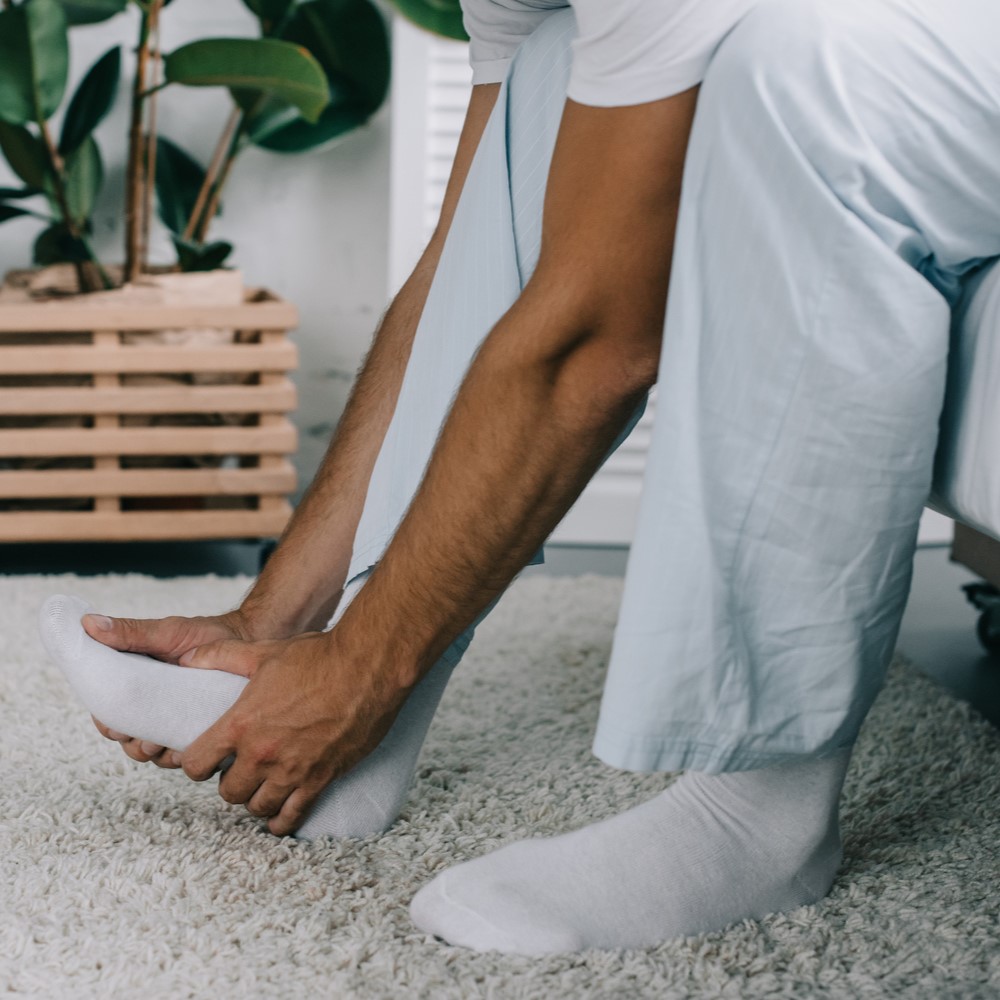Waking up with a jolt of pain in your feet? If you have diabetes, you’re not alone. Morning foot pain is a common symptom of diabetic neuropathy, a nerve damage that can affect people with diabetes. But don’t let it dampen your day! There are ways to prevent and manage this pesky pain. Keep reading to discover the connection between diabetes and morning foot pain, and what you can do about it.
What’s Diabetic Neuropathy?
Diabetic neuropathy, nerve damage caused by high blood sugar levels over time, is a common complication of diabetes. It can manifest in various ways, including numbness, tingling, and pain in the feet. Notably, morning foot pain is a frequently reported symptom among individuals with diabetes.
Learn more about diabetic neuropathy.
The Science Behind Morning Foot Pain
During sleep, our muscles relax, and blood flow to the extremities, particularly the feet, decreases. This reduction in blood flow can temporarily aggravate the nerve damage caused by diabetic neuropathy, leading to stiffness, pain, and numbness upon waking.
Risk Factors for Morning Foot Pain
Several factors can increase the risk of experiencing morning foot pain in individuals with diabetes:
- Poor Blood Sugar Control. Consistently elevated blood sugar levels contribute to nerve damage progression, making individuals more susceptible to foot pain.
- Long-term Diabetes Duration. The longer you have diabetes, the higher the risk of developing diabetic neuropathy and experiencing symptoms.
- Smoking can impair blood circulation and worsen nerve damage, exacerbating foot pain.
- Foot Deformities. Conditions like bunions and hammertoes can increase pressure on the nerves in the feet, intensifying pain symptoms.
Prevention and Management Strategies
Fortunately, there are steps individuals with diabetes can take to prevent or manage morning foot pain:
- Maintain Good Blood Sugar Control. Keeping blood sugar levels within the target range is crucial for reducing the risk of diabetic neuropathy. Find out how a GP can help you manage your diabetes level.
- Daily self-foot checks and regular examinations by a healthcare professional can help detect early signs of foot problems.
- Proper foot care, including washing and drying feet, moisturizing regularly, and wearing comfortable shoes, can help maintain healthy feet. Learn about diabetic foot care.
- Quitting smoking can improve blood circulation and reduce the risk of nerve damage progression. Get medical help to quit smoking now.
- Pain Management: Over-the-counter pain relievers, warm foot soaks, and physical therapy can help alleviate foot pain symptoms.
- Consult a Podiatrist. A podiatrist can provide personalized recommendations and treatment plans for managing diabetic foot pain.
Take-home message
Morning foot pain can be a troublesome symptom of diabetic neuropathy, but it is manageable. By taking proactive steps to prevent nerve damage, practicing proper foot care, and seeking appropriate medical attention, individuals with diabetes can effectively manage their foot pain and maintain overall foot health.



